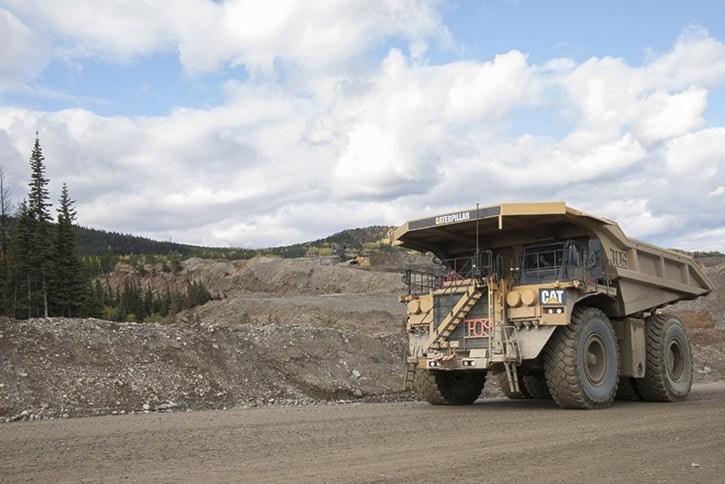The Mount Milligan copper-gold mine held a commissioning ceremony on site Oct. 8 with government and mine officials in attendance.
The commissioning means the mine is operational, with the equipment having been tested and run through the start-up phases. The mine is expected to be in full commercial production by the end of the year.
The mine cost around $1.57 billion to build over three and a half years, and in 2012 pumped $125 million in spending into the region.
Dennis Hoof, Mount Milligan vice president and general manager spoke at the event about the rapid development of the property, which was a deposit first discovered by Fort St. James prospector Richard Haslinger in 1983.
"What we've experienced at Mount Milligan … is nothing short of a very extraordinary accomplishment," said Hoof.
Thompson Creek Metals bought the Mount Milligan project from Terrane Metals in 2010 and began construction the same year.
Haslinger himself was at the commissioning, and said the project would never have happened without Rob Pease, president and CEO of Terrane Metals, who brought the project to the development phase.
Kevin Loughrey, chairman and chief executive officer of Thompson Creek Metals, remarked on the importance of Mount Milligan for Thompson Creek Metals, which up until now has been strictly a molybdenum-producing company, and with molybdenum prices being low at the moment, is looking to Mount Milligan to diversify their company's assets and income.
"We have worked a long time to get to this point," said Loughrey, who joked lightly about the cost overruns and extra financing the project required to get to production.
"This means everything for our company," he said.
Minister of Jobs, Tourism and Skills Training Shirley Bond and Minister of Energy and Mines Bill Bennett were also both in attendance and spoke briefly.
"I'm really proud of the fact that the McLeod Lake Indian Band and the Nak'azdli Indian Band are going to share in revenue from this project," said Bennett.
Both groups have agreements with the provincial government, however, Nak'azdli First Nation has not yet negotiated a revenue-sharing agreement with Thompson Creek while Tse'khene (McLeod Lake) First Nation has.
Once in full production, the mine is expected to process an average of 60,000 tonnes of ore per day.
The first concentrate has now been shipped via the load out in Mackenzie and the ore produced contains an estimated 25-30 per cent copper and an ounce of gold per tonne.
The mine is expected to produce 81 million pounds of copper and 195,000 ounces of gold over an estimated 22-year mine life.
There are around 350 people working at the mine, which is located 150 km northwest of Prince George, and there were over 1,000 people working at the site during the peak of construction. Eighty per cent of the employees are from the Prince George, Mackenzie, Fort St. James and Vanderhoof area.
Haslinger found the ore body in his prospecting around Fort St. James. Haslinger came to the area under the advisement of someone he met while kayaking the Liard River in the Yukon.
The man told Haslinger Fort St. James would be a good area for gold, so he moved here and found work as a hunting guide, hand faller and other jobs, but always prospecting on the side.
"More than 40 years later and I'm still here," he said.
